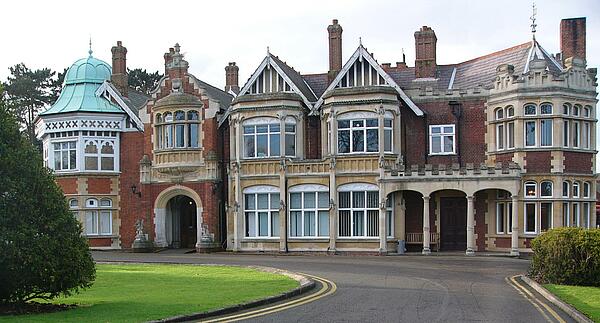William Tutte
William Tutte was a codebreaker at Bletchley Park and one of World War Two’s unsung heroes. His work at Bletchley Park was vital for the Allied victory, in particular his cryptanalysis of the Lorenz cipher gave the Allies to access to invaluable intelligence.
Born on 14 May 1917 in Newsmarket, Suffolk, Tutte showed great aptitude for mathematics from an early age. In 1935, he won a scholarship to Trinity College, Cambridge to study Mathematics and Chemistry.
Tutte joined Bletchley Park on the suggestion of his tutor during the war. He had in fact been previously rejected by Alan Turing, who felt that Tutte would not be a good match for his Enigma team. Instead, Tutte was asked to join the team working on the Tunny (Lorenzo SZ40) project.
‘Tunny’, or the Lorenzo SZ40, was an encoding system used by the Germans which was far more sophisticated that Enigma. Hitler and his generals were so certain that the Tunny would not be broken that it was used to communicate even the most secret messages throughout Europe. By cracking Tunny, British intelligence gained vital access to Nazi confidential information.

The Nazis were highly confident that it was humanly impossible to crack the Lorenzo SZ40, which had even more coding combinations than the Enigma. However, they did not account for human error.
Tutte was just 24 years old when he first started work on Lorenzo. He faced an almost unfathomable problem. On 30 August 1941, codebreakers at Bletchley Park listened as a German operator sent a 4,000 character coded message from Athens to Vienna. However, the message was so large that the recipient had to ask for it to be resent. The sender’s biggest error, however, was in changing the message slightly through the use of abbreviations and punctuation. The codebreakers at Bletchley Park were able to use the differences in the messages to work out the code.
Colonel John Tiltman worked out the message from Athens in only ten days, but it was up to Tutte to figure out how Tunny worked.
By examining the code, Tutte was able to find repetitions and patterns in it. He figured out that the Tunny’s first wheel repeated a pattern after 41 strokes. This led him to the conclusion that the wheel had 41 spokes. He was then able to work out the number of spoke on the remaining eleven wheels.
The importance of Tutte’s discovery became apparent when Bletchley Park was able to decode messages sent by senior officers, including a message from Hitler himself.
Thanks to Tutte’s breakthrough, strategists in D-Day were aware of the German’s defensive structure and plan accordingly.
Tutte went back to Trinity College after the war to carry on with his his pre-war work. In 1948 he was invited to Canada to work at the Universities of Toronto and Waterloo.
Tutte was never awarded for his work at Bletchley Park, but he was made a Fellow of the Royal Society.
William ‘Bill’ Tutte died on 2 May 2002 and is buried in Canada.
See also: Gordon Welchman
MLA Citation/Reference
"William Tutte". HistoryLearning.com. 2025. Web.
